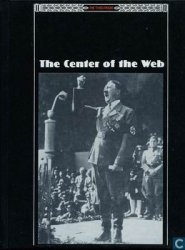In the present context, the term ‘fiber artifacts’ subsumes several diverse classes of perishable artifacts which are represented in the world archaeological record only under relatively rare conditions of preservation. Specifically included are cordage and cordage by-products such as netting, basketry, textiles, sandals, cradles, and a host of other less-standardized constructions. The principal attribute which all of these products have in common is the fact that they are made from plant-derived (i. e., vegetal) fiber or some other plant-based constituent whole leaves, twigs, stems, roots, etc.
Such items are normally recovered in archaeological contexts only when the agents of biodegradation are effectively nullified or at least slowed down appreciably. These situations are relatively rare on the Earth’s surface and include dry caves and rockshel-ters, permafrozen soils, and, almost paradoxically, waterlogged contexts where specimens are completely immersed for extended periods. Other and far rarer preservation contexts include juxtaposition or exposure to metal or metal salts, envelopment in volcanic ash, or incorporation within coprolites. Fiber artifacts may also be preserved when they are totally carbonized even in open or ‘wet’-site conditions (see Frozen Sites and Bodies).
When actual ‘positive’ specimens are not available, detailed data on one or another class of fiber artifacts may be present in the form of negative impressions in fired or unfired soils, on ceramics, and occasionally on other media such as wood or bone. In very rare circumstances, a fiber artifact may be encased in a fine-grained sediment-like silt, then totally disintegrate, and ultimately be infilled with another even finer sediment like clay. In such cases, the equivalent of a lost wax casting is formed and the resultant ghost artifact is actually a positive rather than a negative.
Despite the relative rarity of fiber artifacts in the archaeological record, at least when compared with far more durable items like lithics or ceramics, vegetal artifacts actually form the vast bulk of the technology of most ethnographic hunting and gathering societies regardless of latitude. Similarly, in archaeological contexts such as dry caves where preservation is excellent, fiber artifacts often outnumber lithic artifacts by more than 20 to 1.
In addition to their numerical preponderances in ethnographic assemblages and archaeological contexts where preservation permits truly representative recovery, plant-fiber-based constructions are a peculiarly useful and sensitive artifact class or series of classes on a variety of analytical levels. Indeed, the unique diagnostic attributes of basketry, textiles, cordage, and related materials have been recognized by a relatively large number of specialists for a rather long time.
The ability of all types of plant fiber artifacts to elucidate the lives of their makers is based on a fundamental series of attributes common not simply to basketry or textiles but to all items in this broad grouping. First, as noted long ago by Weltfish, basketry and by extension other fiber artifacts can be comparatively studied and accessed from many perspectives because ‘‘.. .the fundamental factors involved in the technical process objectify themselves in the product and are not lost in the process of making”. A parallel view was echoed by another specialist King who noted that the ‘intimacy’ of the maker’s association with fiber artifacts is far greater than that which obtains with lithics, ceramics, or virtually any other kind of construction in any medium.
This ‘intimacy’ is predicated upon and conditioned by the fact that all of the craftsperson’s ‘manufacturing choices’ are ‘physically represented’ in the finished product whether it is a basket, a textile, a sandal, net or cradle. Moreover, as stressed by Baumhoff, the manufacturing choices which are manifested in the finished specimen
.. .may be regarded as discrete elements rather than as arbitrary points in a continuum. The basket weaver may twine with a right hand twist or a left hand twist but he cannot be halfway in between. Furthermore, his method of work is perfectly apparent in the finished product so that the craftsman himself need not be observed at all. Thus, for most situations in basket making there is only a finite number of logical alternatives.. .(Baumhoff, 1957: 2).
Of the greatest importance in the study of any class or type of fiber artifact is the fact that the ‘finite number of logical alternatives' referred to by Baumhoff is culturally determined to a very high degree. In point of fact, no class of artifacts normally available to the archaeologist for analysis possesses a greater number of ‘culturally bound’ or ‘culturally determined' yet still visible attributes than do plant fiber constructions.
The terms ‘culturally bound’ or ‘culturally determined' mean simply and explicitly that the range of techno-manipulative alternatives witnessed in the extant attributes of a finished basket, textile, or other fiber artifact is to a very great degree fixed or delimited by the customs or standards of the ‘immediate' social entity to which the maker belongs or within which the maker functions. While these standards are subject to idiosyncratic modification and even occasional borrowing of designs or construction attributes, their collective existence is eminently verifiable. This is scarcely a novel observation nor is its corollary - that no two individuals, bands, tribes, societies, or other social groups ‘ever' produced fiber artifacts of any kind in exactly the same fashion. Not only has this fact been demonstrated ethnographically for over a century, but it is also archaeologically valid as well.




 World History
World History









